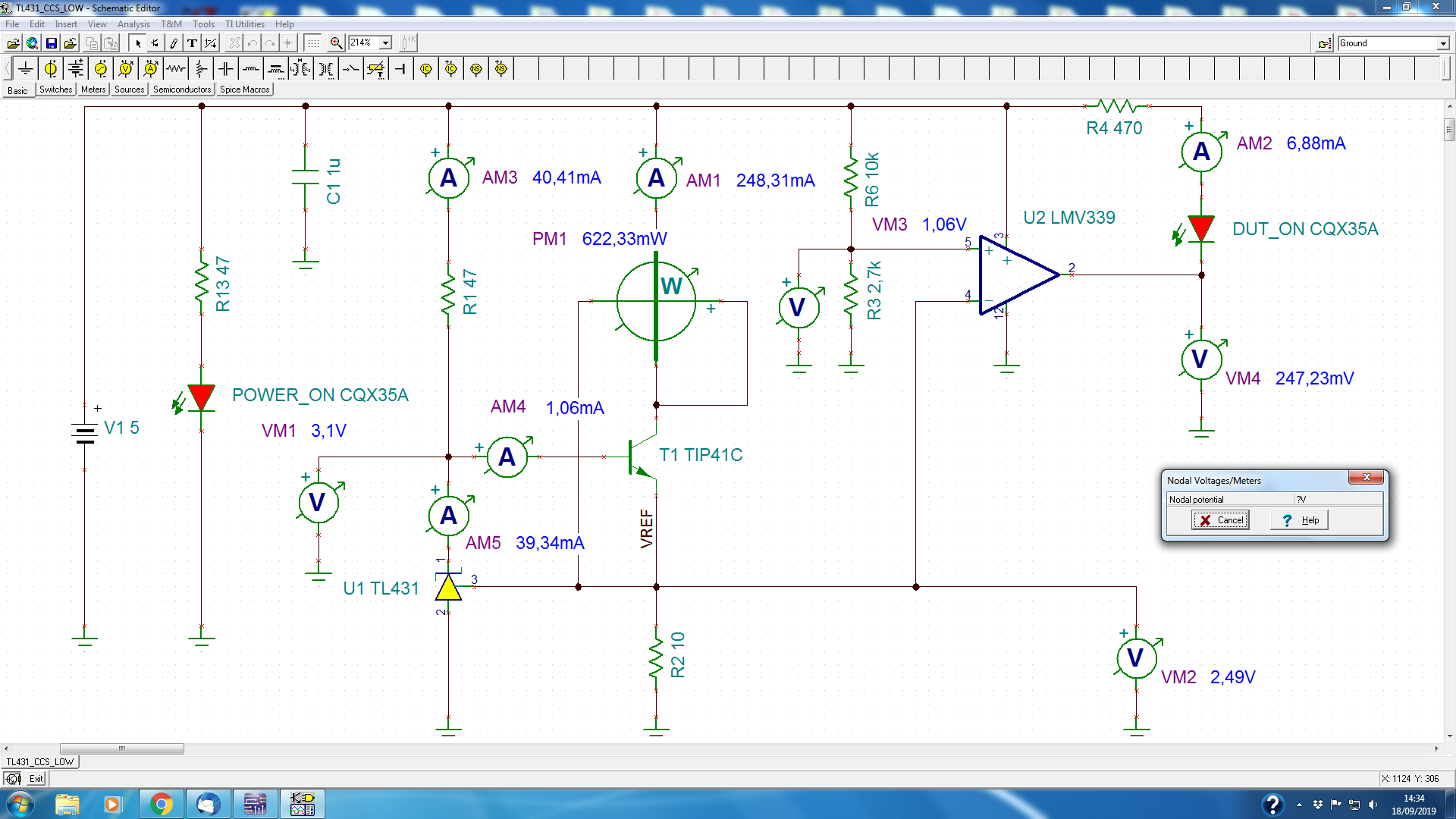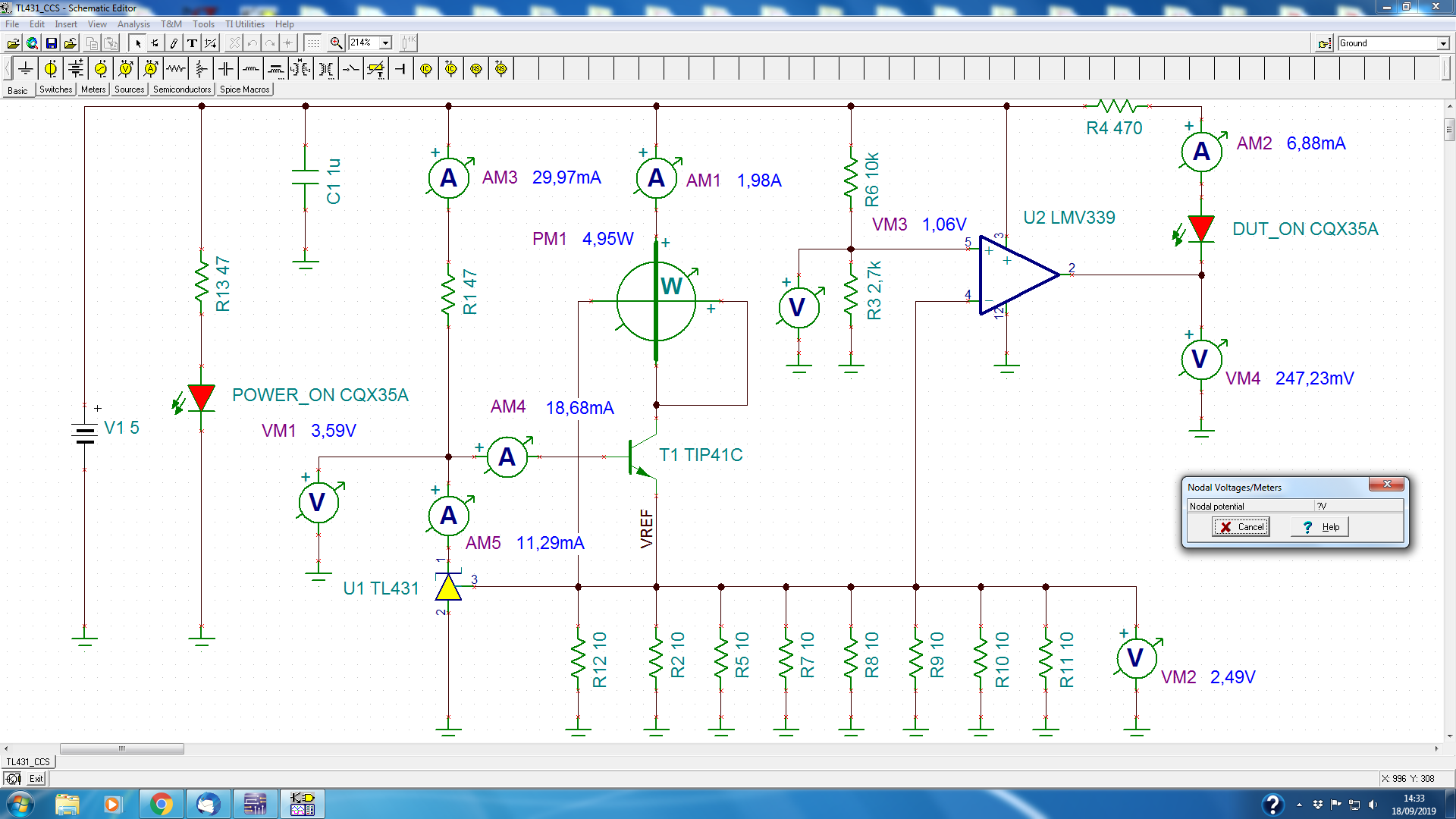Other Parts Discussed in Thread: TLV431, LMV431
Precision Costant Current Sink with TL431:
I am designing for high Energy Physics experiment a Precision Costant Current Sink. I simulated the entire circut with TINA TI using TL431 and TIP41 as BJT, the simulation was perfect it works as expected but now on the PCB (hardware) the system does not work properly the VREF is not costant when I try to vary the emitter current (adding in parallel more R 10 ohm on the emitter) and the IC (Collector current) is of course not costant I need precise current sink from 250mA to 2A in steps of 250mA. The circuiti will be used to test power cable for thermal test, the cable will be inserted from VIn (5Vdc) and BJT collector. The simulation as indicate works properly but I don't find where is the problem mybe. During simulation I used for R1 a low value because using other value the current was completely unstable. As VIn I used 5V to avoid a lot of Power dissipation on the BJT. I am sending the Tina TI Simulation files and also pictures of the schemes and pg.30 of the TI data of the Costant Current Sink applications. Thank s a lot for your help. Kind regards.
TL431_CCS.rar

 Andrea Papi.
Andrea Papi.





